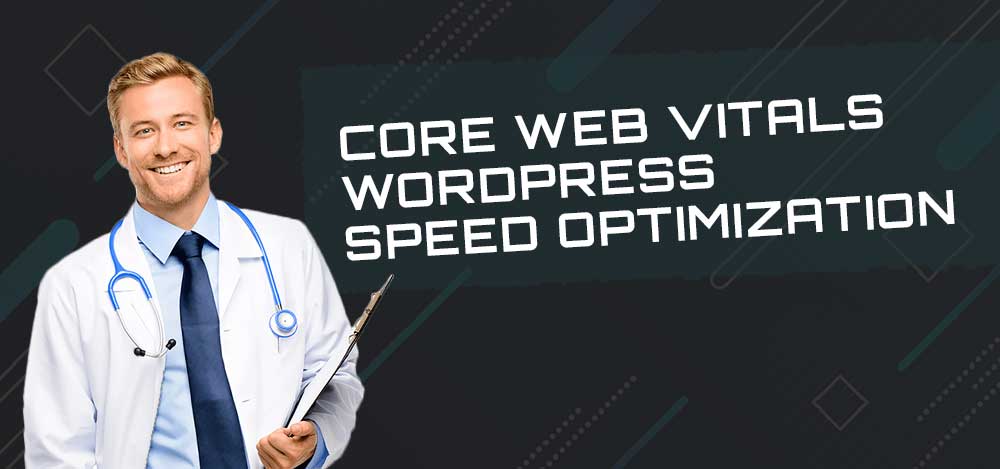In today’s digital age, where online presence is paramount for businesses and individuals alike, having a fast and efficient website is crucial. The importance of core web vitals speed optimization cannot be overstated. Website visitors expect quick loading times, seamless user experiences, and responsive interfaces. In this article, we will delve into the significance of optimizing your website’s core web vitals speed and provide you with valuable insights on how to enhance your site’s performance.
What Are Core Web Vitals?
Core Web Vitals are a set of specific website performance metrics introduced by Google. They focus on three key aspects of user experience: loading, interactivity, and visual stability. The metrics that make up core web vitals are:
- Largest Contentful Paint (LCP): Measures the time it takes for the main content of a web page to load.
- First Input Delay (FID): Measures the time it takes for a web page to become interactive.
- Cumulative Layout Shift (CLS): Measures the visual stability of a web page by tracking unexpected layout shifts.
Why Are Core Web Vitals Important?
Core Web Vitals have gained significance as they directly impact user experience. Google has made it clear that websites with better core web vitals performance are more likely to rank higher in search engine results. By optimizing these metrics, you enhance your website’s usability and improve the overall user experience.
How Are Core Web Vitals Measured?
Core Web Vitals are measured using real-world data collected from actual user visits. Google analyzes various user-centric metrics, such as first paint and first contentful paint, to calculate the core web vitals scores. These scores are then used to assess a website’s performance and determine its ranking in search results.
The Impact of Core Web Vitals on User Experience
Faster Loading Times
One of the primary benefits of optimizing core web vitals is faster loading times. Users expect web pages to load quickly, and if a site takes too long to load, they are likely to abandon it. By improving the Largest Contentful Paint (LCP) metric, you can ensure that your web pages load swiftly, keeping visitors engaged and reducing bounce rates.
Reduced Bounce Rates
When a website takes too long to load or lacks interactivity, visitors are more likely to leave without exploring further. This results in higher bounce rates, which can negatively impact your website’s performance and SEO. By optimizing the First Input Delay (FID) metric, you can provide a seamless and responsive user experience, encouraging visitors to stay longer on your site.
Improved User Engagement
A well-optimized website with good core web vitals performance leads to improved user engagement. When users have a positive experience on your site, they are more likely to interact with your content, click on links, and make purchases. By focusing on Cumulative Layout Shift (CLS), you can ensure that the visual elements of your web pages remain stable, preventing frustrating shifts that may disrupt user interaction.
Techniques for Speed Optimization
Minimizing HTTP Requests
Reducing the number of HTTP requests is a key strategy for improving website speed. Combining files, such as CSS and JavaScript, and utilizing browser caching can significantly reduce the load on your server and enhance the overall performance of your site.
Optimizing Images and Videos
Images and videos often contribute to the bulk of a webpage’s size. By compressing images without compromising quality and leveraging modern image formats, such as WebP, you can reduce file sizes and improve loading times. Additionally, lazy loading techniques can be employed to delay the loading of non-visible media until it becomes necessary.
Caching for Better Performance
Implementing browser caching allows web browsers to store static files, such as CSS and JavaScript, locally. This way, subsequent visits to your website require fewer requests to the server, resulting in faster load times for returning visitors.
Mobile Optimization for Core Web Vitals
Responsive Design
With the majority of internet users accessing websites through mobile devices, it is crucial to prioritize mobile optimization. Responsive design ensures that your web pages adapt to different screen sizes and provide a seamless user experience across devices.
AMP (Accelerated Mobile Pages)
AMP is an open-source initiative that aims to deliver lightning-fast web pages on mobile devices. By implementing AMP, you can optimize your web pages for faster loading, better user experience, and increased visibility in mobile search results.
Mobile-First Indexing
Google’s mobile-first indexing means that the mobile version of your website is now the primary basis for indexing and ranking. Ensuring that your mobile site has excellent core web vitals performance is essential to maintain and improve your search engine rankings.
Website Structure and Core Web Vitals
Organizing Content for Accessibility
Organizing your website’s content in a logical and accessible manner enhances user experience and positively impacts core web vitals. Using proper heading tags (H1, H2, etc.), clear navigation menus, and descriptive anchor text helps users navigate your site and improves search engine crawlability.
Optimizing Navigation
A well-designed navigation structure allows visitors to find the information they need quickly and easily. By optimizing your website’s navigation, you can improve user engagement and reduce bounce rates, ultimately enhancing your core web vitals performance.
Streamlining CSS and JavaScript
Minifying and compressing CSS and JavaScript files can significantly reduce their file sizes. Smaller file sizes lead to faster loading times, contributing to better core web vitals performance. Additionally, placing JavaScript at the bottom of your web pages can prevent rendering delays and improve interactivity.
Server-Side Optimization
Choosing the Right Hosting Provider
Selecting a reliable and high-performance hosting provider is essential for optimizing core web vitals. A hosting provider with fast servers and robust infrastructure ensures that your website loads quickly and efficiently, improving the overall user experience.
Content Delivery Networks (CDNs)
CDNs are geographically distributed servers that store cached versions of your website’s static content. By delivering content from the server closest to the user’s location, CDNs reduce latency and enhance core web vitals performance.
GZIP Compression
Enabling GZIP compression on your web server reduces the file sizes of your website’s resources, such as HTML, CSS, and JavaScript files. Smaller file sizes lead to faster downloads, resulting in improved core web vitals scores.
Technical SEO and Core Web Vitals
Structured Data Markup
Implementing structured data markup, such as Schema.org, provides search engines with additional context about your web pages’ content. This helps search engines understand your content better and can positively impact your website’s visibility and click-through rates.
XML Sitemaps
XML sitemaps act as a roadmap for search engines, guiding them to discover and index your web pages efficiently. Including your important pages in an XML sitemap helps search engines prioritize crawling and indexing, which can positively influence your core web vitals performance.
Canonical URLs
Using canonical URLs helps eliminate duplicate content issues by specifying the preferred version of a web page. By consolidating the ranking signals and traffic to a single URL, canonicalization can improve your core web vitals performance and overall SEO.
Monitoring and Testing Core Web Vitals
Google’s PageSpeed Insights
PageSpeed Insights is a powerful tool provided by Google that analyzes the performance of your web pages. It provides actionable recommendations to optimize core web vitals and improve overall website speed.
WebPageTest.org
WebPageTest.org allows you to test and analyze your website’s performance from different locations around the world. It provides detailed insights into load times, waterfall charts, and performance grades, helping you identify areas for improvement in your core web vitals optimization.
Chrome User Experience Report (CrUX)
CrUX is a public dataset that provides real-world user experience data collected from Chrome users. It offers valuable insights into the performance of popular websites, allowing you to compare your core web vitals performance with industry benchmarks.
Frequently Asked Questions (FAQs)
In today’s competitive online landscape, optimizing your website’s core web vitals speed is crucial for success. By focusing on loading times, interactivity, and visual stability, you can enhance user experiences, reduce bounce rates, and improve search engine rankings. Implement the techniques and strategies outlined in this article to boost your website’s performance and stay ahead in the digital world.




